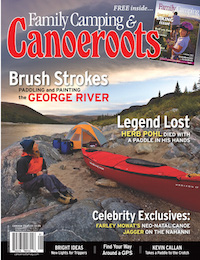As your family’s fleet of bicycles grows, it gets harder to move the wrench fast enough to keep up. Though periodic attention from a skilled mechanic is always a good idea, you can stay ahead of most maintenance issues by keeping your eye on a few important areas.
Brakes: coaster brakes (a.k.a. pedal brakes) require virtually no maintenance. Other types of brakes require some attention. For rim brakes, ensure that the brake pads are properly positioned so when engaged they aren’t too high rim). As the pads wear, the cable will become slack. Tighten the cable, either at the lever or the wheel, so the lever can’t touch the handlebar grip. Disc brakes are increasingly popular and come in two main types. Mechanical disc brakes need periodic cable and pad adjustments; best done by a professional. Hydraulic disc brakes adjust for pad wear automatically, but you do need to monitor the pads to ensure they don’t wear out entirely. If a hydraulic brake feels soft, it needs bleeding. Again, take it to the pros.
Wheels: check that the rims are true by spinning the wheel and making sure it does not wobble. Ensure that the wheel is properly attached to the bike by making sure the axle nuts or quick release levers are tight. Finally, check for loose hubs by holding the front forks or rear stays in one hand and wiggling the wheels from side to side to check for play.
Handlebar grips: As simple as grips are, they can be a hazard if they are worn or don’t fit properly. Make sure that the ends of the grips are intact and don’t leave the hollow ends of the bar exposed, ready to take a core sample of your youngster. If the grips are loose and slip or rotate on the bar replace them with a new pair immediately.
Handlebars and saddle: sandwich the front wheel between your legs and try to turn the handlebars from side to side. If the bars move when the wheel stays still, tighten the stem. The photo shows how to do this on a quill stem. It usually requires a 6mm Allen wrench (shown) or a 13mm box end wrench (a crescent wrench will do in a pinch). Tighten the top bolt on the stem just enough so that the handlebars cannot move independently of the front wheel. Now wiggle the saddle. If there is any rodeo potential tighten either the bolt that fixes the seat post clamp to the saddle stays or the clamp that holds the seat post in the frame. Your child uses these points to control the bike so they should be secure.
Headset: this is the bearing set that the handlebar and fork rotate on and is often very loose on kids’ bikes. To check the headset, engage the front brake and rock the handle- bars fore and aft. If you feel some play it is loose and should be tightened. The majority of kids’ bikes come with what’s called a threaded headset/quill stem. If the bike in question resembles the one in the photo then you will need some specialty tools to tighten the headset. Pick these up at your local bike shop. Be sure to take the bike with you because there is some variance in the sizes and styles of threaded headsets and therefore the tools you’ll need. You can also ask the staff for basic instructions. For more instructions on this (and other jobs) visit www.parktool.com and look under the repair Help section.
Tyler Merringer is the owner and head mechanic at Revolution Cycles in Rossland, B.C.




